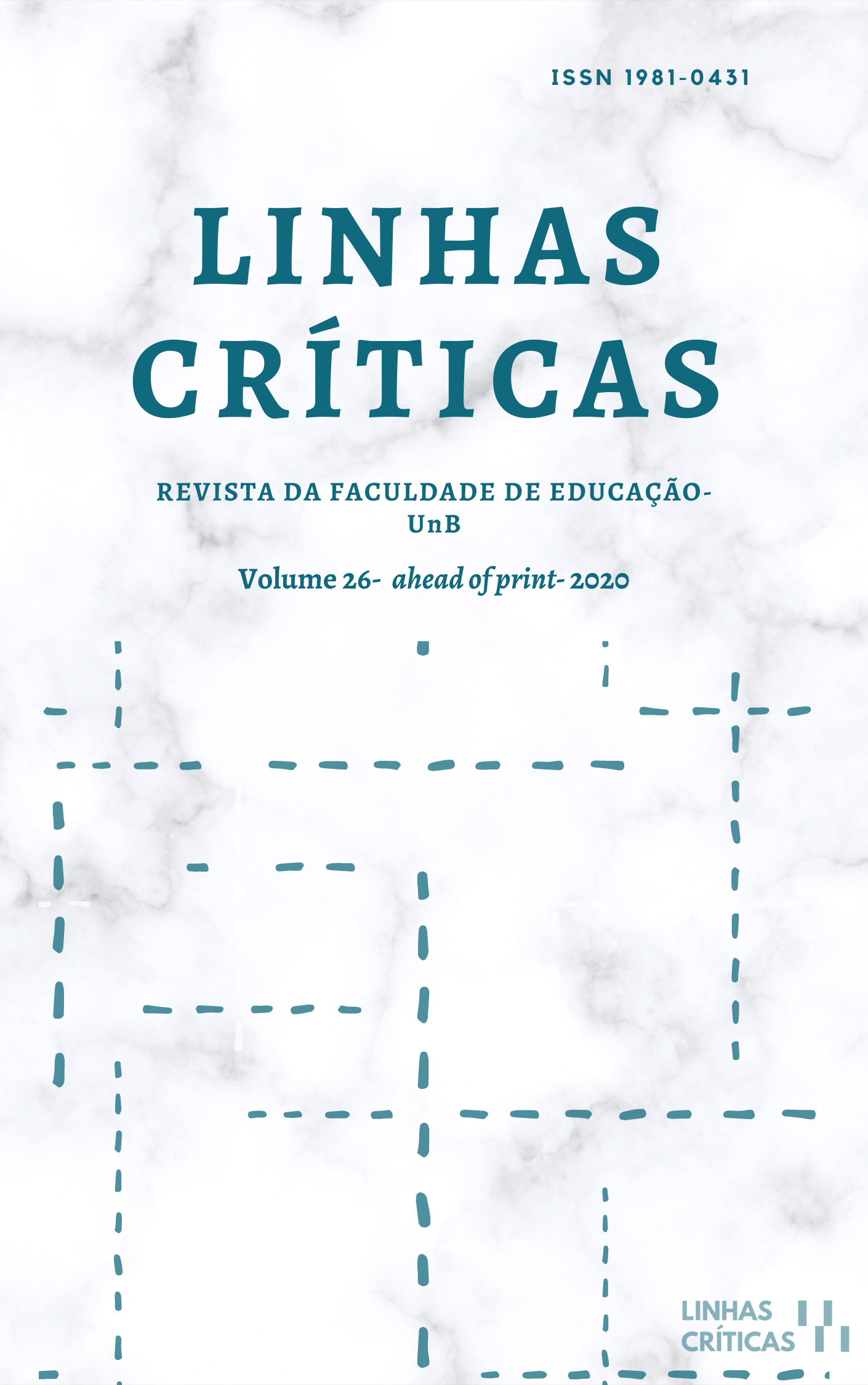Writing of stories
a strategy to enhance the writing process in children
DOI:
https://doi.org/10.26512/lc.v26.2020.34605Keywords:
Writing, Stories, Verbal-logical reasoning, Learning, ProcessAbstract
This article exposes how the writing of stories constitutes a strategy to promote the development of the writing process of children. The study has a mixed-method, descriptive scope and got implemented from the analysis of the writings prepared by a group of 28 third-grade students at elementary school from an Educational Institution in Chía, Cundinamarca, Colombia. For this, two didactic units got designed, the purpose was articulate the teaching of logical-verbal processes and short stories writing as a methodological strategy, and an evaluation rubric was developed as an instrument of analysis and monitoring of the process of writing. The implemented writing process was reflected in the improvement of the quality of the texts.
Keywords: Writing, stories, verbal-logical reasoning, learning, process.
Downloads
References
Bragdon, A., & Gamon, D. (2005). El poder del cerebro izquierdo: cómo desarrollar el pensamiento lógico. Selector.
Cabarcas, A. (2016). El papel de la escritura para aprender. Horizontes Pedagógicos, 18(2), 32-38. https://horizontespedagogicos.ibero.edu.co/article/view/18203/899
Canu, M. (1994). Lectoescritura: ¿Aprendizaje espontaneo o escolar? Lectura y vida, 14(4), 15-24. http://www.lecturayvida.fahce.unlp.edu.ar/numeros/a15n4/15_04_Canu.pdf
Chinga, G. (2012). Producción de textos narrativos en estudiantes del V ciclo de educación primaria de una Escuela de Pachacútec. [Tesis de Maestría, Universidad San Ignacio de Loyola]. Repositorio de la Universidad San Ignacio de Loyola. http://repositorio.usil.edu.pe/handle/123456789/1134
De Castro, D. (2017). Metodologías en investigaciones sobre producción de textos narrativos con niños. Linhas Críticas, 23(51), 290-310. https://doi.org/10.26512/lc.v23i51.8225
Ferreiro, E. (1991). El desarrollo de la alfabetización: Psicogénesis. En Y. Goodman. (Comp.). Los niños construyen su lectoescritura (pp 21-35). Aique.
Ferreiro, E. (2000). Leer y escribir en un mundo cambiante. Conferencia expuesta. Sesiones Plenarias. 26º Congreso de la Unión Internacional de Editores. Cinvestav.
Gardner, H. (1999). Estructura de la mente: la teoría de las inteligencias múltiples. Fondo de Cultura Económica.
Granados, D., & Torres, P. (2016). Errores de escritura en español en niños de tercer grado de educación primaria. Pensamiento Psicológico, 14(2), 113-124. http://doi.org/10.11144/Javerianacali.PPSI14-2.eeen
Guzmán, R., Ghitis, T., & Ruiz, C. (2018). Lectura y escritura en los primeros años: Transiciones en el desarrollo y el aprendizaje. Universidad de La Sabana.
Hernández, M., & Borja, M. (2019). La escritura: un reto didáctico y disciplinar desde el acompañamiento en el aula en el marco del Programa Todos a Aprender. Mova, 1(1), 95-105. http://revistas.medellin.edu.co/movaojs/index.php/revistamova/article/view/sis2/13
Isaza, B., & Castaño, A. (2010). Referentes para la didáctica del lenguaje en el segundo ciclo. Kimpres.
Lerner, D. (2001). Leer y escribir en la escuela: lo real, lo posible y lo necesario. Fondo de Cultura Económica.
Medina, J., Fuenmayor, G., & Camacho, H. (2009). Psicogénesis de la escritura: un acercamiento crítico. Revista de Artes y Humanidades UNICA, 10(3), 71-98. https://www.redalyc.org/articulo.oa?id=170114929005
Miranda, M. (2019). Desarrollo de la escritura en español: un estudio psicolingüístico. [Tesis de Doctorado, Universidad de Buenos Aires]. Repositorio Institucional FILO. http://repositorio.filo.uba.ar/handle/filodigital/11287
Molano, Y. (2017). La construcción de la escritura a través del cuento. Palobra - Palabra que obra, 17, 244-254. https://doi.org/10.32997/2346-2884-vol.17-num.17-2017-1834
Moreno, C. (2016). Escritura de textos narrativos en niños escolares: la importancia de la memoria de trabajo y la memoria a largo plazo. Revista de Psicología. 12(24), 7-17. https://erevistas.uca.edu.ar/index.php/RPSI/article/view/410/401
Nhat, T., & Cam, T. (2019). A Syntactic Analysis of English Short Stories for Children. Tap chí Khoa hoc. 13(2), 15-28. http://qnu.edu.vn/Resources/Docs/SubDomain/pqlkh-htqt/tap%20chi%20khoa%20hoc%20so%202.pdf#page=15
Perkins, D. (1999). ¿Qué es la comprensión? En M. Stone. (Comp.). La enseñanza para la comprensión: vinculación entre la investigación y la práctica (pp. 69-94). Paidos.
Riesco, A. (2002). Función social de la escritura. Revista General de Información y Documentación, 12(2), 393-428. https://revistas.ucm.es/index.php/RGID/article/view/RGID0202220393A/10099
Ros, E. (2013). El cuento infantil como herramienta socializadora de género. Cuestiones pedagógicas. 22. 329-350. https://revistascientificas.us.es/index.php/Cuestiones-Pedagogicas/article/view/9846/8606
Salmon, A. (2009). Hacer visible el pensamiento para desarrollar la lectoescritura. Implicaciones para estudiantes bilingües. Lectura y vida. Revista Latinoamericana de Lectura. 30(4), 62-69. http://www.lecturayvida.fahce.unlp.edu.ar/numeros/a30n4/30_04_Salmon.pdf
Silva, M. do C. (2020). Ensino da escrita na alfabetização: como promover as aprendizagens das crianças? Linhas Críticas. 26, e26874. https://doi.org/10.26512/lc.v26.2020.30093
Teberosky, A. (1989). Writing of the narrative texts. Journal for the Study of Education and Development. 12(46), 17-35. https://doi.org/10.1080/02103702.1989.10822233
Vygotsky, L. (1993). Pensamiento y Lenguaje (tomo II). Visor. [Trabajo original publicado 1934].
Published
How to Cite
Issue
Section
License
Copyright (c) 2020 Marly Dayana Daza Martínez, Rodolfo Villanueva Meneses

This work is licensed under a Creative Commons Attribution 4.0 International License.
Authors who publish in this journal agree to the following terms:
-Authors maintains the copyright and grants the journal the right of first publication, the work being simultaneously licensed under the Creative Commons Attribution License which allows the sharing of the work with recognition of the authorship of the work and initial publication in this journal.
- Authors are authorized to enter into additional contracts separately, for non-exclusive distribution of the version of the work published in this journal (eg publish in institutional repository or as a book chapter), with acknowledgment of authorship and initial publication in this journal.
-Authorers are allowed and encouraged to publish and distribute their work online (eg in institutional repositories or on their personal page) at any point before or during the editorial process, as this can generate productive changes as well as increase the impact and the citation of published work (See The Effect of Free Access).



